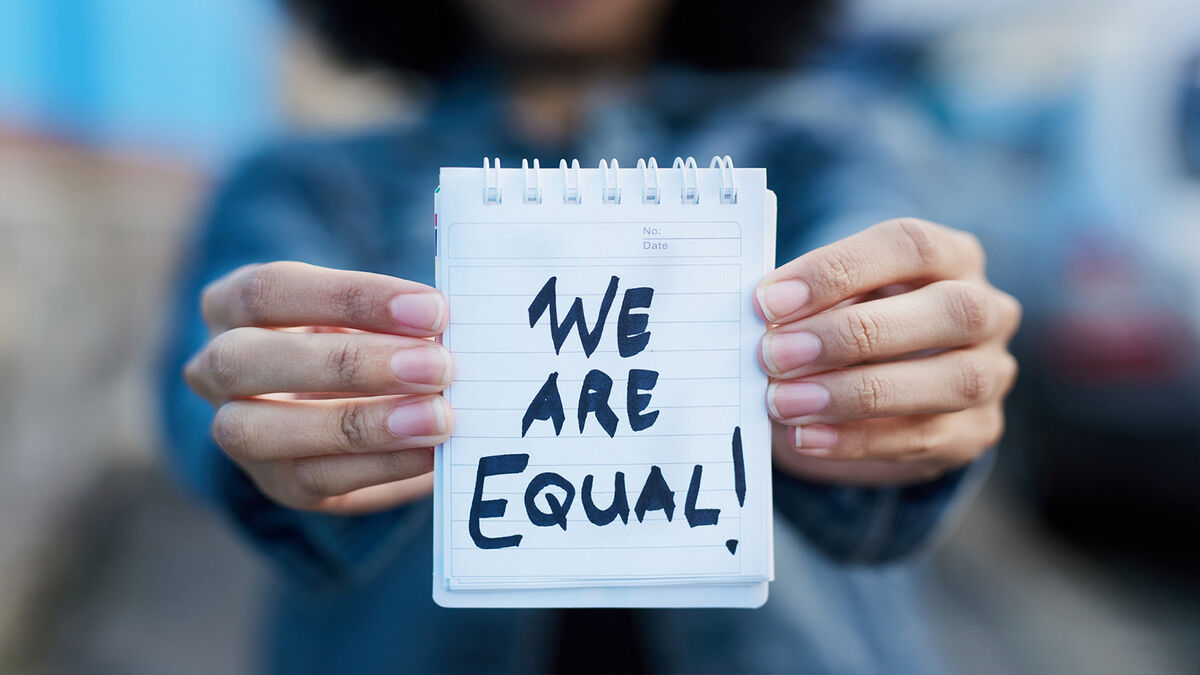
Despite decades of feminist consciousness-raising, sexist language still exists in our culture. Gender-specific titles and pronouns can subtly influence sexism as well as our thoughts and expectations about gender roles and appropriate occupations and goals for the sexes.
Defining Sexist Language
Language that excludes either men or women when discussing a topic that is applicable to both sexes is considered sexist language.
Examples of Sexist Language
Sexist language includes using the word man to refer to humanity, and using titles like Congressman and fireman. Another common error that shows gender bias is assuming that the subject of all sentences is male. For instance, the statement, "Each student chose his own topic for his term paper," leads the reader to assume that all the students in the class were male, despite the probability that half of them were female.
Gender Bias
Underlying sexist language is gender bias, which can occur consciously or unconsciously. When unconscious, the gender bias in language can be considered to be the product of society: other people use sexist language, and repetition normalizes it until the speaker unconsciously produces his or her own sexist language where men are the norm and women the "other”.
Reasons to Avoid Sexist Language
Not only does sexist language lead to discriminatory ideas about certain occupations, it can also be a barrier to effective communication.
Perpetuating Job Role Stereotypes
Sexist language encourages discrimination and can discourage people from pursuing their dreams.
- If engineers are always spoken of as male, a girl who aspires to be an engineer may feel that she has no hope, since the common perception is that "all" engineers are men.
- If flight attendants are always referred to as stewardesses, males who wish to pursue this line of work may hesitate to do so due to a stereotype that this is a job for women.
- Referring to a female doctor as a lady doctor while simply referring to a male as a doctor reinforces the idea that women in such roles are somehow less than their male counterparts.
Interfering With Effective Communication
Sexist language can also cause people to feel excluded. This is not an issue that violates your right to free speech; you are free to use offensive language, and also free to decide that you do not agree with the definition of what constitutes sexist language. However, if you are using language that is offensive to half of your audience, you will not be able get your message across. People will not be receptive to your arguments if they are aggrieved by your use of exclusively masculine or feminine pronouns.

Replace Sexist Language in Your Vocabulary
Remember that the goal is not to avoid referring to individual people as male or female when you are certain of an individual’s gender. The goal is to be inclusionary when speaking in hypothetical statements or of mixed-gender groups or people who may be transgender or nonbinary.
- Use genderless collective references: Use humanity or the human race instead of man or mankind when you are referring to all people.
- Avoid the generic he: Don’t use he or him as a generic term. Instead, use an appropriate article, such as the, a, or an. Instead of his, use one’s or a person’s. If you are speaking of a single hypothetical individual, use person or individual instead of man.
- Describe roles without specifying gender: Use genderless titles whenever possible, such as meterologist instead of weatherman, firefighter instead of fireman, and homemaker instead of housewife.
- Don’t add gender markers: Avoid adding gender markers to genderless titles, such as male nurse; use the genderless title alone (i.e., nurse). This should apply to all occupations; there is no reason to pair a person’s gender with the individual’s job title.
Use plural where possible: Rework sentences in the plural to avoid gendered pronouns and possessive adjectives. This will create smoother and more grammatically correct prose than using a plural pronoun with a singular subject. For example:
- Sexist: Each student makes up his own schedule.
- Grammatically incorrect: Each student makes up their own schedule.
- Gender-neutral and grammatically correct: Students make up their own schedules.
- Include both male and female pronouns: When it is not possible to recast sentences in the plural, use “he or she” or “his or her” to be inclusive. (The winning contestant must claim his or her prize by Tuesday.) However, using this formulation too often can break up the flow of your writing, so use it sparingly.
- Use gender neutral letter greetings: Don’t address letters to Dear Sir(s). Contact the company to get the actual name of the letter recipient or use “To Whom it May Concern” or similar.
Sexist Language Is Discriminatory
The use of sexist language undermines the American goal of a non-discriminatory, inclusive society. There are simple ways to avoid using language that can offend and marginalize half the people on Earth, so writers should take care to use gender-inclusive language. Improve your communication skills by learning how to incorporate unbiased language into your vocabulary.